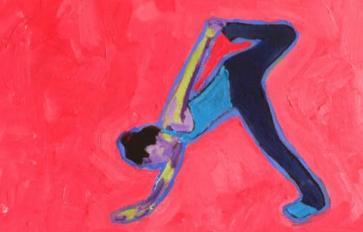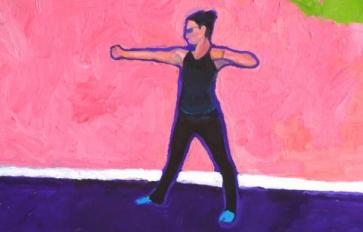
Chances are, if you played sports throughout high school, college, or even post-college, you finished your practice, grabbed a Gatorade and went home to stretch, thinking that you mastered the art of recovery. If you felt particularly sore the next day, perhaps you grabbed an Advil to ease the pain, and then pushed through the following day’s scheduled workout, ignoring your body’s signs.
Sound familiar?
It’s a common procedure, but it’s based on faulty science. The Gatorade you drink for electrolyte purposes has 56 grams of sugar, almost as much as a can of soda, and static stretching can actually reduce agility and athletic performance. The Advil you take can have fatal effects on your liver, and pushing through your workout the next day increases your risk of injury, mental fatigue and burnout. So how do you recover?
Follow these steps to ensure your body mind recover–the right (and worthwhile) way.
1. Sleep
Sleep is underrated, and while you may be tired of hearing that you need 7-9 hours of quality sleep per night, lack of sleep is likely the biggest inhibitor to growth–on and off the field. Beyond simply logging hours, your sleep should occur in a dark room, without outside sounds or lights. Think twice about falling asleep with the television on, in addition to leaving electronics set on the “on” position all night. EMF pollution can affect everything from your hormones to your psychology, affecting far more than we can yet quantify. Keep your bedroom clean of negative energies of any kind, and you might find yourself stronger for it.
2. Eat Organic
More importantly, avoid processed foods that lack micronutrients and are comprised of allergens like gluten, soy, dairy, corn, and myriad artificial sweeteners and colors. While it’s true that food is ultimately fuel for one's body – and food is necessary to rebuild your tired muscles post-exercise – use the opportunity post-workout to eat a meal high in quality proteins (think grass-fed beef, wild salmon, pastured eggs), in-season vegetables, and a portion of carbohydrates (such as sweet potato, squash, wild rice, quinoa). Add healthy fats (avocado, nuts, ghee), and you’re doing it right! Need more convincing? Here’s how these top athletes fuel up.
3. Stretch Dynamically
This may come as a surprise to many, but gone are the days of attempting to touch your toes, or jamming your foot into your glutes in order to stretch your hamstring. Research now shows that static stretching has little-to-no effect (and can, in fact, have a negative effect) on athletic performance. Ensure you perform a thorough warm-up before your workout, in addition to a 10-15 minute cool down where you give your body ample time to literally cool down your muscles.
4. Turn to Nature, First
Though Advil and other NSAIDs are rampant in the athletic (and non-athletic) world, long-term effects of using these pain relievers can be potentially fatal. Before popping a pill, try turning to natural remedies, most of which work better, faster, and with additional benefits. Topical magnesium works wonders on sore muscles, as does a bath with magnesium flakes and essential oils sprinkled in. Anti-inflammatories like turmeric, tart cherry juice and ginger can also alleviate pain (and add taste to any meal!).
5. Listen
“Listen to your body” may sound like a clichéd phrase, but it’s accurate – most of the time. If you feel particularly sore, fatigued, or on the verge of injury, it’s better to take the day to recover (and by recover, I mean following the tips above and not sitting on the couch with a bag of chips), than it is to push through your workout. While listening to your body’s signals is a great first step, understanding your HRV (Heart Rate Variability) is the best way to ensure you’re recovered well enough to perform. This article explains the what, why, and how of using an HRV monitor. After all, your body doesn’t lie!








